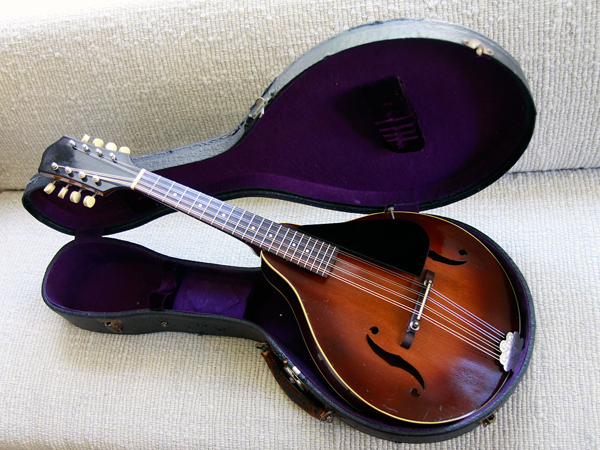
Close-up #26: 1931 Adelphi SN 5164
One of our instruments, again sitting on our sofa
– this time a mandolin. The segmented f-holes identify this instrument as an early Masterbilt period instrument – confirmed by the stamped serial number visible through the bass-side f-hole: "5164" – without any silver oval label that is usually (but not always) found next to these stamped SNs. This is actually the lowest documented SN of any Epiphone Masterbilt mandolin. (Addition October 2018: Rivoli mandolin SN 5162 just surfaced, obviously built side-by-side with this one, since only 2 numbers apart!)
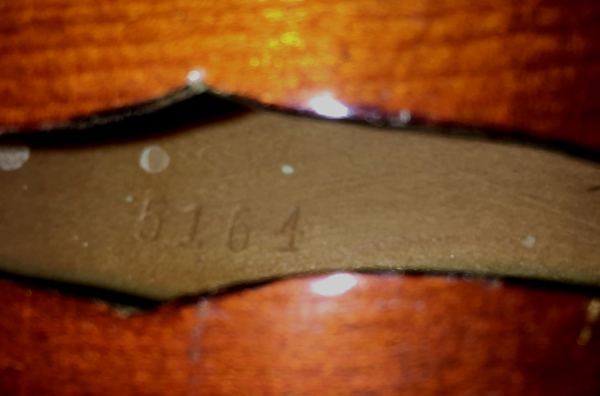
The teardrop-shaped body has an arched solid spruce top and a press-arched maple back, likely laminated.
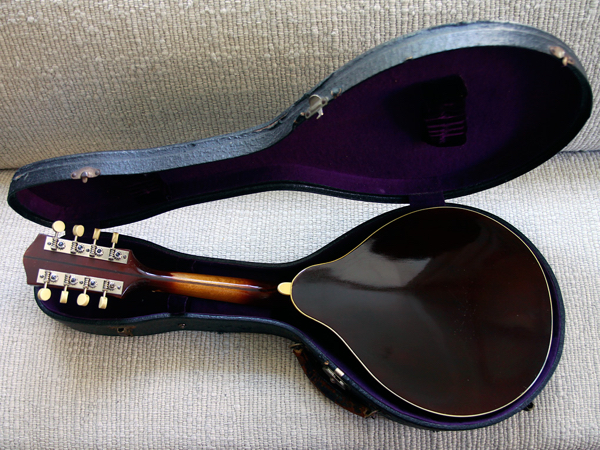
Epiphone's early Masterbilt line was most successful with their archtop guitars, but also included 4 mandolin models: Windsor, Strand, Rivoli and Adelphi. (The 1932 catalog also listed 4 mandola versions plus 3 mandocello models – however it looks like not many of these were ordered: I actually don't know of any documented example ... so if you happen to own one, please contact me to let me know!)
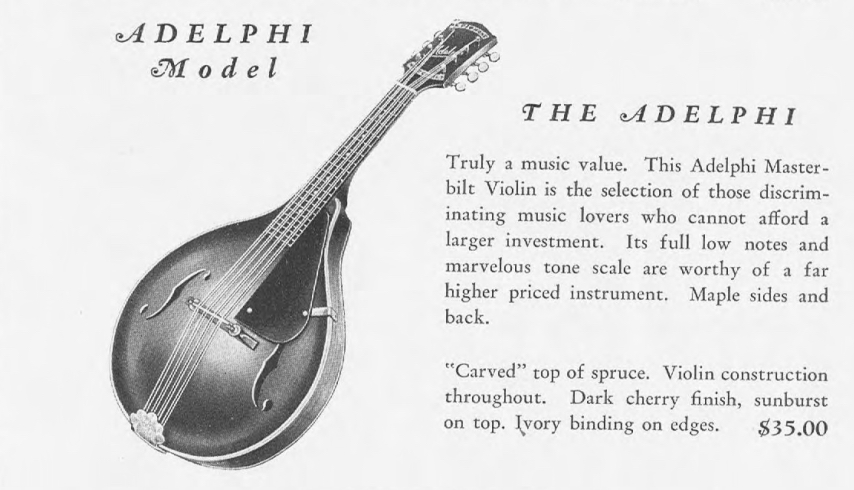
Our instrument shares many features with the Adelphi model of the 1932 catalog (pictured above). But there are a few differences: Although the headstock has the lightly curved top of the pre-1933 models, it doesn't show any banners or model name as depicted in the catalog. So is SN 5164 really an Adelphi? Or maybe a prototype?
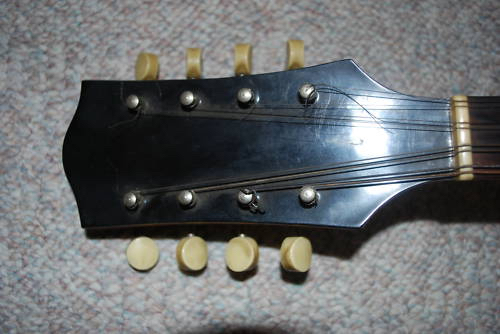
Interestingly, on the back of the headstock one can spot a very faint shadow of an "Epiphone" stamp – as seen on some early Olympic and Beverly models. The simple strip tuners with square-end plates are probably Waverly-made.
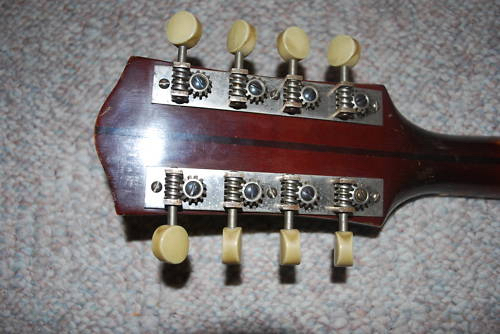
The black plastic pickguard is attached to the rim by a threaded rod support: I have seen this feature only on a few of the earliest Masterbilts, mostly tenor guitars – although it is shown on several of the guitars pictured in the 1932 catalog (but interestingly not on the Adelphi!). Also the bone saddle in the top part of the adjustable bridge is another detail only found on some 1931–32 Epis.
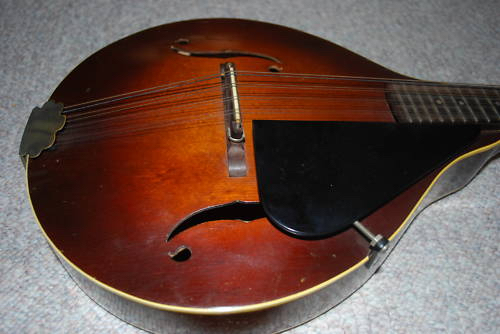
The most interesting constructional feature which sets this mandolin apart from the catalog description we can't show well in pictures: The solid spruce top appears to be not carved (as per 1932 catalog specs) but arched by braces. The arched top is uniform in thickness and without the recurve typical of a carved plate. Unfortunately I don't have a camera that fits into the small f-holes to take a shot. Interestingly, a few of the earliest Melody tenor guitars appear to have similar brace-arched tops.
Finally, unlike any documented (later) Adelphi examples this mandolin features a slightly wider and deeper body, and an unusually long 15" scale – but still too small to be called a mandola I guess. And interestingly, this instrument has an elevated fretboard, while later Epi mandolins all seem to have the board end flush with the top.
The mando is pretty loud, with a more round, ringing tone than we are used to from f-hole mandolins with a carved top. Because of the larger body and long scale I really like how it sounds and plays with the strings tuned down one step below standard tuning – to F C G D.
No matter if experimental prototype or not – SN 5164 is definitely a pretty unique bird!
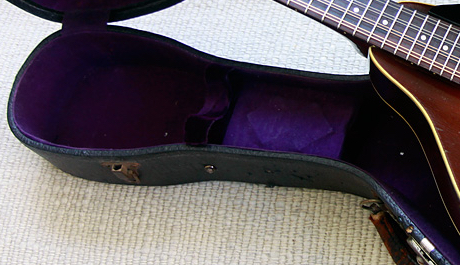
The last picture is for case nerds: The "double diamond" on the pocket lid is a sign for a case made by the Harptone company. If you want to know more about vintage (American) musical instrument cases and their history, Steve Kirtley's invaluable website is the place to visit.
(Dec 6, 2016)